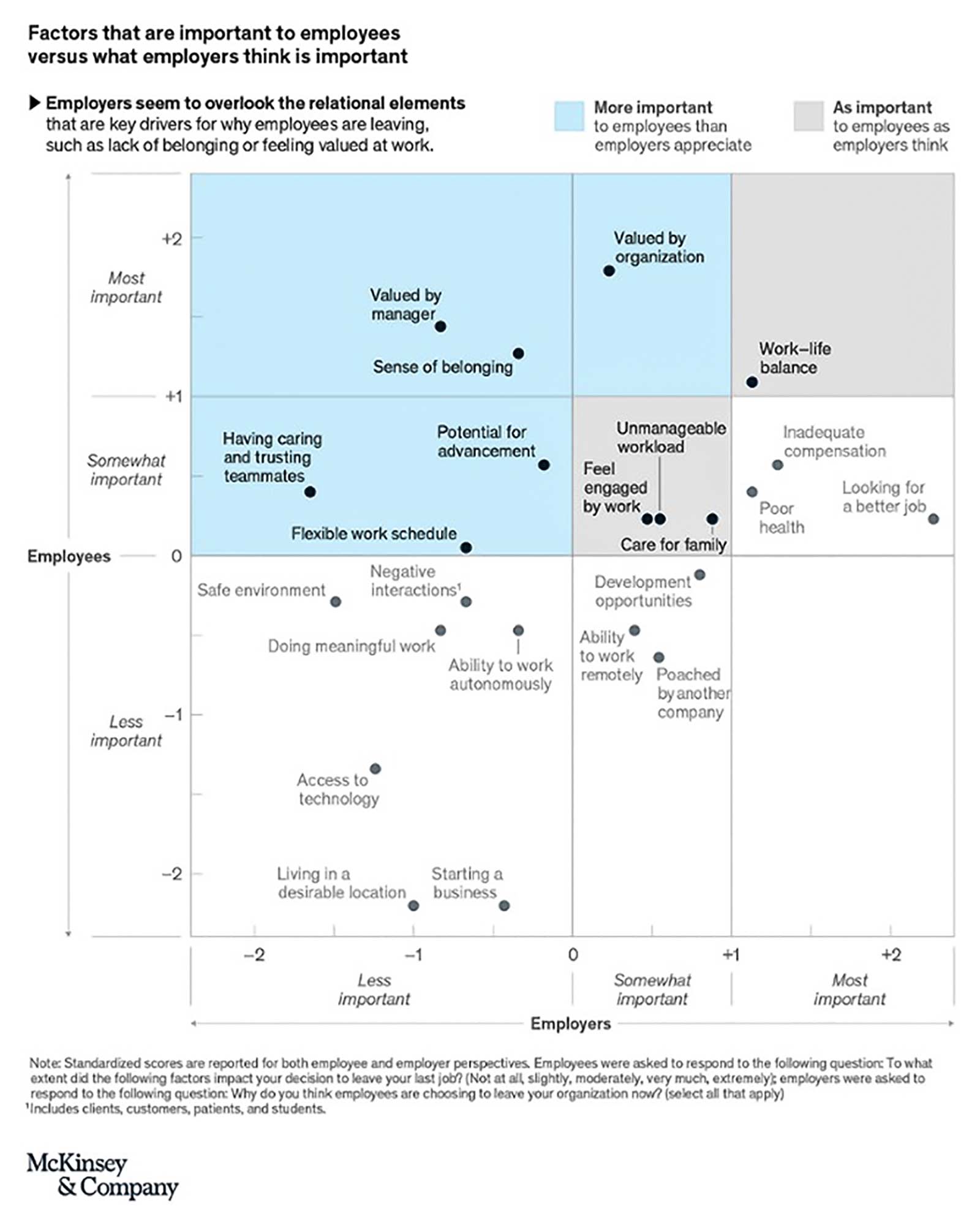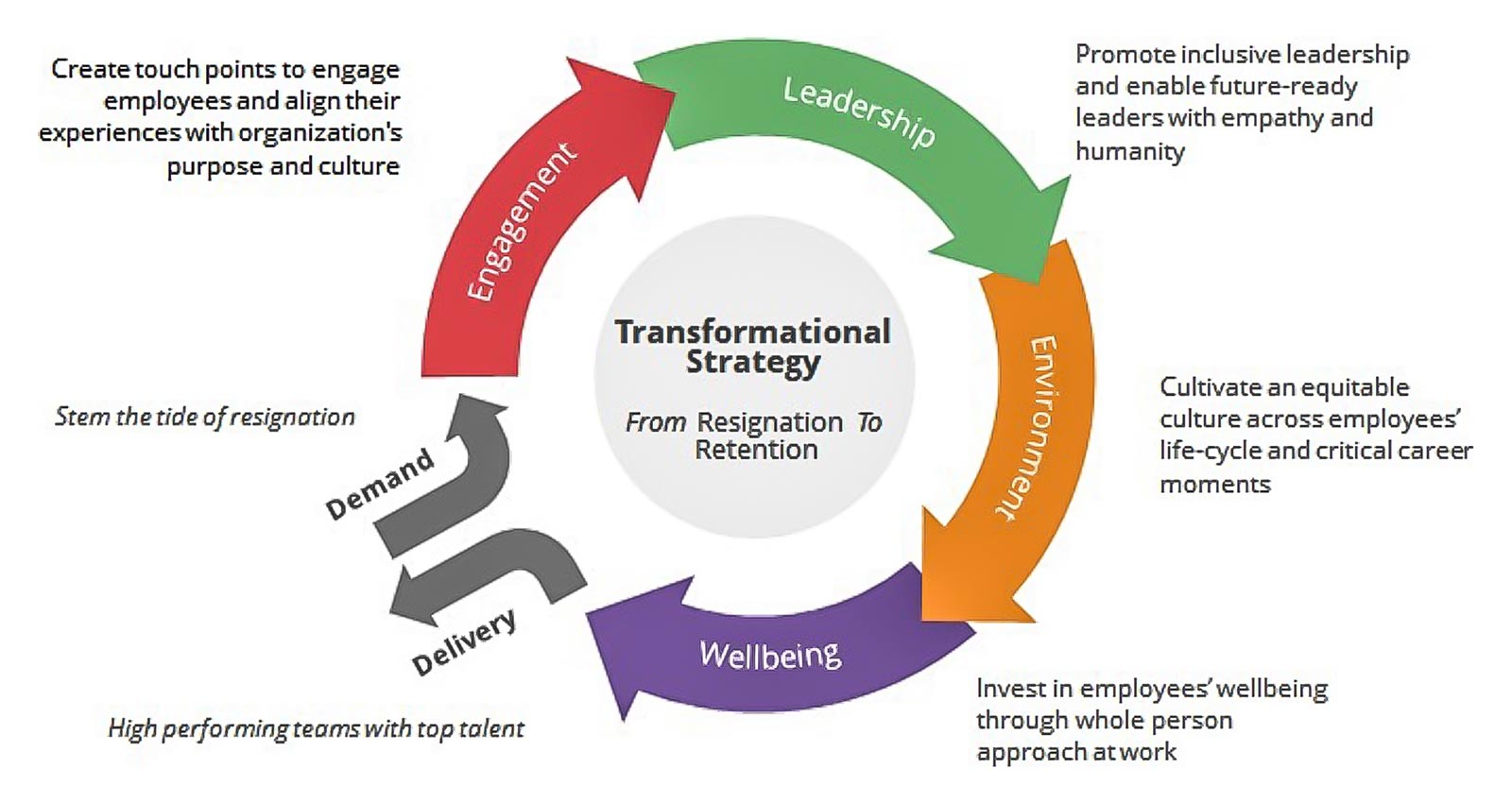By Donald Fan, Senior Director, Global Office of Culture, Diversity, Equity & Inclusion for Walmart

The last several months have witnessed a tidal wave of resignations in the United States and worldwide. On November 12, 2021, the U.S. Labor Department announced that 4.4 million people quit their jobs in September (roughly 3% of the nation’s workforce,) up from 4.3 million in August and far above the pre-pandemic level of 3.6 million.
And it’s not over. Gallup’s research reveals 48 percent of employees are actively looking to make a change, and Personio research shows nearly one out of four employees will do so in the next six months.
Corporate America is struggling on two fronts: record attrition numbers and a severe worker shortage. In August, more than 10.4 million positions remained unfilled across the country. Many organizations seek a quick fix—increasing pay, offering bonuses, and adding perks—to fight the war. If organizations behave as if this is their only ammunition against checking out and walking out, they unwittingly send the wrong message to their people—that their relationship with them is transactional and that the only reason for employees to stay is a paycheck. Research uncovers the motivational effect of pay raises is short lived.
Many employers don’t fully understand why employees are leaving. A recent McKinsey study indicates that employers seem to overlook the relational elements that are driving this employee exodus.
The better move for organizations to pivot on is respecting, recognizing, and valuing the contributions and impact of their people. They need to develop a comprehensive strategy in the workplace, starting with understanding their people’s needs and demands—the real drivers of attrition. The finding from McKinsey’s research reveals that the top three factors employees cited as reasons for quitting were these: employees didn’t feel valued by their organizations (54%) or their managers (52%) or they didn’t feel a sense of belonging at work (51%). Noticeably, employees of color were more likely than their white counterparts to say they left because they didn’t feel they belonged within their teams or organizations. It’s a worrying reminder of the underrepresented groups of employees.


To help stem the tide, I recommend a 4-step strategy:
1. Engagement. Explore various channels for listening, learning, and understanding employees’ top-of-mind issues and the state of their discontent, especially among women and employees of color. More important, be responsive to employee feedback and make changes to course correct. If employees don’t see any changes made after listening sessions, they believe their input, experience, and knowledge aren’t valued.
Employees want to be respected as individuals, so it’s important to acknowledge various needs and wants within the workforce and appreciate diverse backgrounds and perspectives. Provide psychological safety for employees as a resource for sharing, exchanging, risk-taking, vulnerability, and emotional response, instead of an end state that prioritizes “being nice” while stifling dissent and honesty.
Harvard professor Amy Edmondson defines psychological safety as a shared belief among employees that they can bring their whole self to work without fear of humiliation if they speak up with ideas, questions, concerns, or even mistakes. Google’s People Operations team finds psychological safety is the number one indicator of successful teams. And it has a direct tie with the great resignation. For those looking for a new job, their sense of psychological safety rating is significantly lower (3.1/5 vs. 3.6/5) than those not looking.
Communicate the realities of challenge and its impact on your people. Create space for them to step up, participate, and inform the way forward with innovative ideas. Engage them to shape the plan, so they have a sense of ownership while executing projects, removing career barriers, and resolving issues. This practice sends the crucial message that they are trusted and valued. Your outcomes are better when more ideas are included, fuller representation is present, and diverse voices are heard.
With dramatic shifts in where work gets done, clear, consistent communication should be a top objective for organizations and leaders, as it helps employees stay on track and maintain priorities. According to the Workhuman survey, when workers have weekly check-ins, they are twice as likely to see a path for growth within the organization, find meaning and purpose in their work, trust their manager, and have a strong sense of belonging at work.
End Game
A myriad of touchpoints to engage employees and align their experiences with the organization’s purpose and culture
Enabler
Connection, respect, psychological safety, sense of belonging
2. Leadership. According to LinkedIn, 75 percent of people quit their jobs to get away from their manager at some point in their career. Non-inclusive behaviors by a manager remain the number one reason people quit their jobs. People exit because they don’t feel fairly treated, respected, and valued. Business leaders must set an exceptional example of inclusive behaviors. A habit-breaking approach to racial and gender bias leads to behavioral changes and an improved work climate.
Amid an influx of resignations, genuine displays of empathy from leaders and managers can make an enormous difference. Teach inclusive leadership (commitment, courage, curiosity, cognizance of bias, cultural intelligence, and collaboration)—a cornerstone of effective management that fosters trust-based relationships. An inclusive leader lifts overall engagement and performance, and strengthens talent retention—even in times of crisis.
CEOs and C-suite executives must walk the talk. In their effort to lead by example, they can start with self-reflection to identify biases and actions that either support or undermine change. Executives who ignore the empathy gap risk losing talent to competitors amid the Great Resignation.
End Game
Inclusive leadership and future-ready leaders with empathy and humanity
Enabler
Inclusion, trust-building, caring, leading by example
3. Environment. Without an equitable culture, engagement won’t sustain. Today’s talent market has shifted. Employers need to treat their employees as human beings first and cultivate a fair environment to retain them. Teach allyship across levels at work: learn by observing, listening, and hearing other people’s lived experiences, leading the change, take action to correct unfairness and injustice, and remove barriers so that everyone can rise and no one is unfairly held down. This commitment helps slow attrition and even achieve growth.
By building a level playing field, everyone has a fair chance to develop and grow, enjoys access to information and resources, and contributes to decision-making processes. Integrate equitable and inclusive practices through critical moments of the talent lifecycle, including hiring, onboarding, development, promotion, performance review, and total rewards. In such a work environment, people share a common purpose, enjoy connectivity and collaboration, and experience a strong sense of belonging.
Given that the nature of work is changing so dramatically, it’s vital to provide equitable opportunities to get people trained and upskilled on new technology, data analytics, communicating, and cultivating new relationships. Other nonmonetary incentives include increased recognition and access to mentors, executive sponsors, and the like, for additional development support.
End Game
A culture with equitable policy, practice, and process emerging throughout the employee life cycle and critical career moments
Enabler
Fairness, allyship, learning, development
4. Wellbeing. Organizations are responsible for improving their employees’ wellbeing. When leaders and managers cultivate the whole person at work—not just the employee—they invest in the success of every individual in the organization. According to Gallup, 28 percent of U.S. employees experience burnout on the job very often or always. Among survey respondents who had left their jobs, 45 percent cited the need to take care of family as influential in their decision. A similar proportion of people thinking of quitting cited the demands of family care. Expanding childcare, nursing services, or other home- and family-focused benefits could help keep such employees from leaving and show that you value them as whole people.
The Gartner study shows that 74 percent of human resource leaders mentioned that their organizations offer more flexibility options to employees to address employee turnover. This includes the option to work remotely on certain days during a week and work remotely occasionally upon approval from the employee’s manager.
Supporting “the whole person at work” means investing in the physical, mental, and financial wellbeing of every employee. Commit to incorporating physical wellbeing into all health and benefits programs, and actively communicate the offering to employees. Support employees’ emotional wellbeing by enabling new ways of working, building psychological safety, and contributing to a workplace for all. Evolve financial wellbeing with a focus on pay-for-performance and incentives that support new business areas, enabling the organization to attract and retain talent.
Focusing on wellbeing should not be a one-off practice but an everyday habit. Small steps go a long way. For example, encourage leaders to take time at business meetings to share what they’re doing to prioritize wellbeing and encourage peers to discuss how they’re caring for themselves. Through Thrive Global, employees can download a free app that provides tools and tips from experts to improve sleep, understand meditation benefits, and find gratitude. The app also offers healthy eating, weight-loss support, debt management, and financial wellbeing resources.
Design a paid time off (PTO) plan that gives employees the flexibility to take time off when they need it most. Studies show that people who take time off have lower stress, less risk of heart disease, a better outlook on life, and greater motivation. With PTO, employees have the freedom to focus on their wellbeing however they choose.
End Game
Employee wellbeing using the “whole person” approach at work
Enabler
Drivers of physical, mental, and financial wellbeing; flexibility (where, when, how to work); work and life integration
The Great Resignation is a severe challenge that penetrates across industries—no organization is free from it, where employees are stressed and burned out. If your organization wants to mitigate that stress and the potential turnover it can lead to, practice engagement, promote inclusive behaviors, cultivate an equitable environment, and invest in employees’ overall wellbeing. This committed effort will not only help your organization maintain a steady course in a sea of uncertainty, but set you up for winning the talent war by sustaining a culture in which people feel at home.

Donald Fan
Donald Fan serves as Senior Director in the Global Office of Culture, Diversity, Equity & Inclusion at Walmart Inc.






